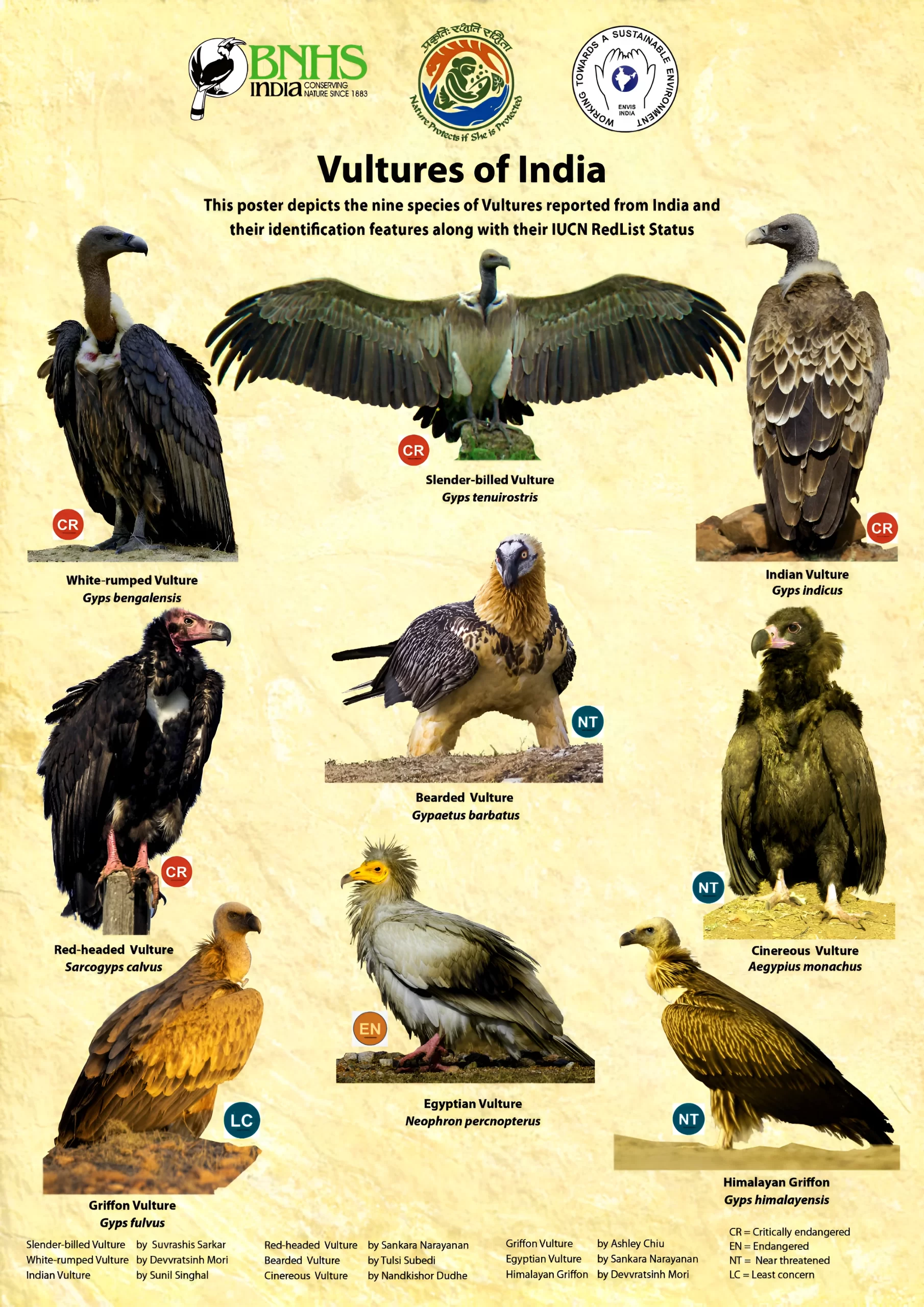Context:
Recently, a ‘Vulture restaurant’ has been set up in Koderma district, Jharkhand to conserve the vulture species.
Vulture Restaurant In Jharkhand
- The Vulture restaurant awaits the establishment of protocols with cow shelters and municipalities for the provision of diclofenac-free animal carcasses.
- The restaurant plans to serve scavenger birds with carcass sources from these designated places.
- Aim: To address the adverse impact of livestock drugs, particularly diclofenac, on vultures.
About Vulture Restaurant
- Vulture restaurant is an example of in-situ conservation.
- First in the World: The first such restaurant was created in South Africa in 1966.
- Inspired by this concept, similar restaurants were created in several other countries, including Cambodia, Switzerland, Spain and Nepal.
- In India: The first such restaurant was opened in 2015 at Phansad Wildlife Sanctuary in Raigad district of Maharashtra.
About Vultures
- Sociable Creature: Vultures are often seen as a collective unit. Out of 23 species of vultures in the world, nine are found in India.

- Slow Reproduction Rate: Vultures are slow breeders so the survival of every individual is very crucial.
- Need for Conservation: Conservation of vultures is important as the bird species plays an important ecological role through its rapid consumption of animal carcasses.
Conservation Status of Vultures: WPA, CITES, and IUCN
- Wildlife Protection Act (WPA), 1972: Vultures are protected under Schedule (1) of the WPA, 1972.
- The Convention on International Trade in Endangered Species of Wild Fauna and Flora (CITES): Appendix II
- International Union for Conservation of Nature (IUCN): There are nine species of vultures in India:
- Indian Vulture or Long-billed vulture (Gyps indicus)-Critically Endangered
- Indian White-backed Vulture (Gyps bengalensis)-Critically Endangered
- Red-headed Vulture (Sarcogyps calvus)- Critically Endangered
- Slender-billed Vulture (Gyps tenuirostris)- Critically Endangered
- Egyptian Vulture (Neophron percnopterus)- Endangered
- Cinereous Vulture (Aegypius monachus)- Near Threatened
- Bearded Vulture (Gypaetus barbatus)-Near Threatened
- Himalayan Vulture (Gyps himalayansis)-Near Threatened
- Griffon Vulture (Gyps fulvus)- Least Concern
Also Refer: IUCN Red List Update At COP28
Threats to Vultures
- Hunting: Myths about the medicinal healing powers of vultures’ body parts have led to the hunting of vultures.
- Quarrying: Quarrying and blasting of stones where vultures nest have also caused their decline.
- Diclofenac’s Impact on Vultures: Vultures are exposed to the diclofenac when they consume carcasses of animals that were treated with the drug shortly before their death.
- The vultures die from kidney failure within days of exposure to diclofenac-contaminated tissues.
- Even 1% of it in the carcass would kill vultures in a short time after it feeds.
- Diclofenac: A common anti-inflammatory drug administered to livestock for treating symptoms of inflammation and fevers.
Vultures Conservation Steps taken by the Government
- Vulture Care Centre (VCC): To study the cause of deaths of vultures in India, a VCC was set up at Pinjore, Haryana in 2001.
- Later in 2004, the VCC was upgraded to being the first Vulture Conservation and Breeding Centres (VCBC) in India.
- Vulture Action Plan: In 2020, the Ministry of Environment, Forest and Climate Change of Government of India has launched a Vulture Action Plan 2020-25.
- Aim: To step up conservation measures and set up a mechanism to ensure that toxic drugs other than diclofenac are also banned for veterinary use.
- In 2023, other drugs like Ketoprofen and Aceclofenac were also banned.
- Safe Zone Declaration: To provide a safe habitat to vultures, the Jharkhand forest department has declared a 100-km radius from the center of Hazaribag as a safe zone.
- Hazaribag district is home to several rare varieties of vulture.
- Conservation Centre: In 2014, the Jharkhand Forest Department set up its lone vulture conservation and breeding center in the Muta area.
News Source: Deccan Herald
![]() 16 Jan 2024
16 Jan 2024


